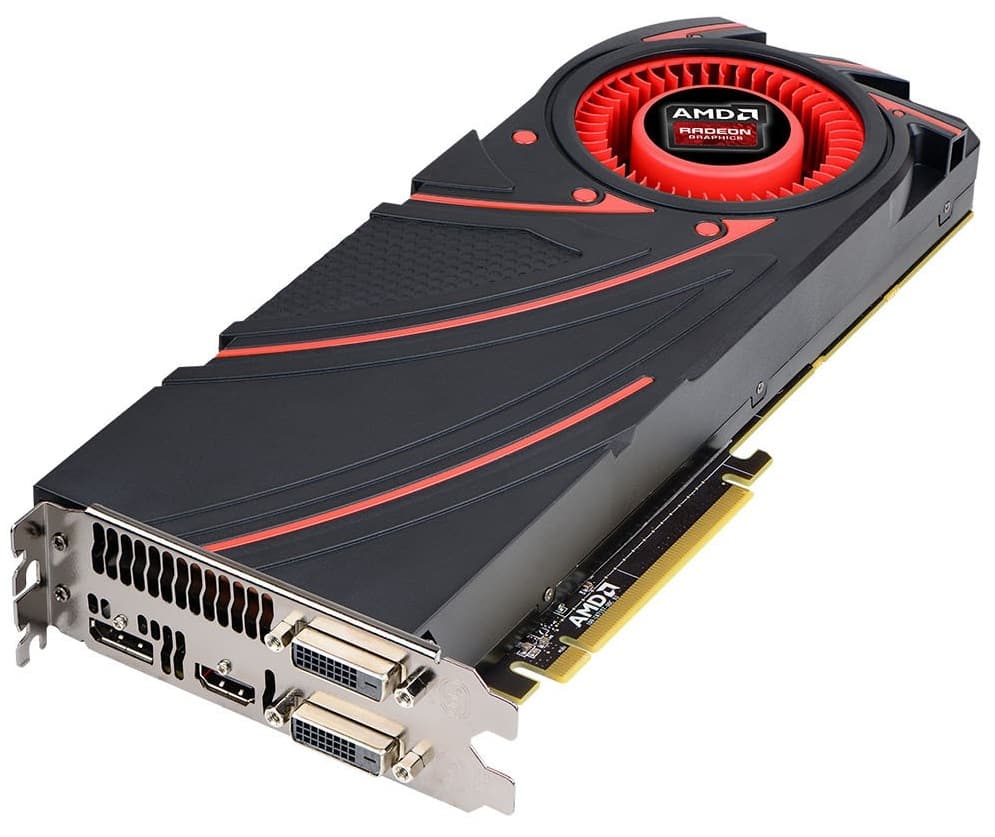AMD’s Radeon R9 and Radeon R7 series graphics cards are now officially available around the globe from AMD and its various AIC partners. AMD has announced that three cards are available through retail channels today, those cards include the AMD Radeon R9 280X, AMD Radeon R9 270X and the AMD Radeon R7 260X.

AMD Radeon R9 280X Specifications
The top card that is available to users right now is the AMD Radeon R9 280X. This card is based off of the 28nm Tahiti die and features 2048 stream processors, 128 TMUs, and 32 ROPs. The GPU clock is set at 1000 MHz and has a boost clock of 1050 MHz. The card has 3 GB of GDDR5 memory that runs across a 384-bit interface. The memory is clocked at 6000 MHz (effective). Outputs include dual-DVI, HDMI and DisplayPort. The R9 280X is available for $299.99 for reference models and a little more for non-reference models.

Check out reviews of the R9 280X below:
– AMD Radeon R9 280X Review @ Anandtech
– AMD Radeon R9 280X Review @ ExpertReviews
– AMD Radeon R9 280X Review @ Tomshardware
– AMD Radeon R9 280X Review @ 4Gamer.net
– AMD Radeon R9 280X Review @ Eteknix
– AMD Radeon R9 280X Review @ HotHardware
– AMD Radeon R9 280X Review @ HardwareCanucks
– AMD Radeon R9 280X Review @ VR-Zone
– AMD Radeon R9 280X Review @ HardwareHeaven
– AMD Radeon R9 280X Review @ Hexus
– AMD Radeon R9 280X Review @ Bit-Tech
– AMD Radeon R9 280X Review @ Guru3D
– AMD Radeon R9 280X Review @ Hardware.Info
– AMD Radeon R9 280X Review @ TechReport
– AMD Radeon R9 280X Review @ PCPerspective
– AMD Radeon R9 280X Review @ Techpowerup
– AMD Radeon R9 280X Review @ Computerbase
– AMD Radeon R9 280X Review @ Sweclockers
– AMD Radeon R9 280X Review @ Overclock3d
AMD Radeon R9 270X Specifications
Moving down the line we have the AMD Radeon R9 270X. This card is based off the Curacao XT die and features 1280 stream processors, 80 TMUs, and 32 ROPs. It will have 2 GB of GDDR5 memory that runs across a 256-bit memory interface. The core clock is set at 1050 MHz and the memory operates at 5.6 GHz (effective). The GPU is aimed at the mainstream and will hit the market at $199.99 for the reference model.

Check out reviews of the R9 270X below:
– AMD Radeon R9 270X Review @ Hardware.Info
– AMD Radeon R9 270X Review @ TechReport
– AMD Radeon R9 270X Review @ PCPerspective
– AMD Radeon R9 270X Review @ Tomshardware
– AMD Radeon R9 270X Review @ 4Gamer.net
– AMD Radeon R9 270X Review @ Eteknix
– AMD Radeon R9 270X Review @ Vortez
– AMD Radeon R9 270X Review @ Techpowerup
– AMD Radeon R9 270X Review @ Computerbase
– AMD Radeon R9 270X Review @ Sweclockers
– AMD Radeon R9 270X Review @ HardwareCanucks
– AMD Radeon R9 270X Review @ VR-Zone
– AMD Radeon R9 270X Review @ Hexus
– AMD Radeon R9 270X Review @ Bit-Tech
– AMD Radeon R9 270X Review @ Guru3D
AMD Radeon R7 260X Specifications
Next is the Radeon R7 260X which is more or less a Radeon HD 7790 rebrand. It features the Bonaire XTX chip with 896 stream processors, 16 ROPs and 56 TMUs. It also has 2 GB of GDDR5 memory, but it is only running across a 128-bit interface. The core clock is set at 1100 MHz while the memory operates at 6.5 GHz (effective). The card is priced at $139.99.

Check out reviews of the R7 260X below:
– AMD Radeon R7 260X Review @ Bit-Tech
– AMD Radeon R7 260X Review @ Guru3D
– AMD Radeon R7 260X Review @ Hardware.Info
– AMD Radeon R7 260X Review @ PCPerspective
– AMD Radeon R7 260X Review @ Tomshardware
– AMD Radeon R7 260X Review @ Techpowerup
– AMD Radeon R7 260X Review @ Computerbase
– AMD Radeon R7 260X Review @ HardwareCanucks
– AMD Radeon R7 260X Review @ VR-Zone
– AMD Radeon R7 260X Review @ Hexus
– AMD Radeon R7 260X Review @ 4Gamer.net
– AMD Radeon R7 260X Review @ Eteknix

Finally at the entry level we have the Radeon R7 240 and Radeon R7 250. The R7 240 card will feature 320 shaders, 8 ROPs and 20 TMUs. The card will have only 1 GB of memory running across a 128-bit interface. The core clock is set at 780 MHz for the core and 1150 MHz for the memory. The R7 250 is based off the Oland XT core and features 384 shaders, up to 2 GB of GDDR5 memory across a 128-bit interface and a clock speed of 1050 MHz core and 4.6 GHz (effective) for the memory.
These models have several different forms including a full shroud, quiet cooler design, and a passive heatsink design for smaller builds. The last of the entry level cards from AMD is the R5 230 which will retail for $39-$49.
So what card will you be getting?


